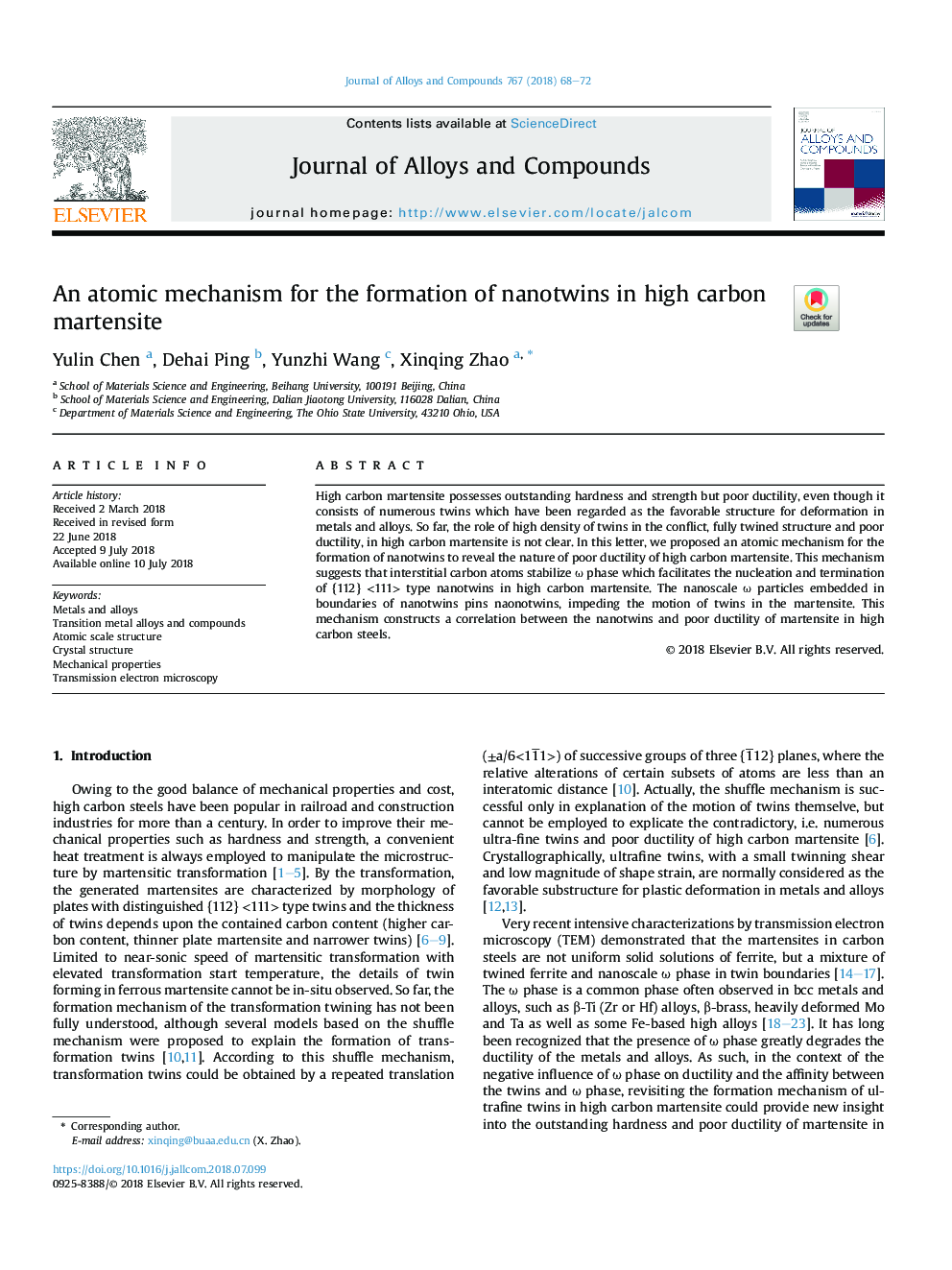| Article ID | Journal | Published Year | Pages | File Type |
|---|---|---|---|---|
| 7990159 | Journal of Alloys and Compounds | 2018 | 5 Pages |
Abstract
High carbon martensite possesses outstanding hardness and strength but poor ductility, even though it consists of numerous twins which have been regarded as the favorable structure for deformation in metals and alloys. So far, the role of high density of twins in the conflict, fully twined structure and poor ductility, in high carbon martensite is not clear. In this letter, we proposed an atomic mechanism for the formation of nanotwins to reveal the nature of poor ductility of high carbon martensite. This mechanism suggests that interstitial carbon atoms stabilize Ï phase which facilitates the nucleation and termination of {112} <111> type nanotwins in high carbon martensite. The nanoscale Ï particles embedded in boundaries of nanotwins pins naonotwins, impeding the motion of twins in the martensite. This mechanism constructs a correlation between the nanotwins and poor ductility of martensite in high carbon steels.
Keywords
Related Topics
Physical Sciences and Engineering
Materials Science
Metals and Alloys
Authors
Yulin Chen, Dehai Ping, Yunzhi Wang, Xinqing Zhao,
